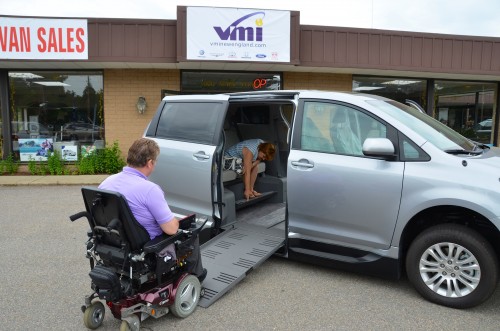Cognitive Impairment in Multiple Sclerosis
A Forgotten Disability Remembered

By Kristen Rahn, Ph.D., Barbara Slusher, M.B.A., Ph.D., and Adam Kaplin, M.D., Ph.D.
Editor’s note: Physicians first noted the presence of cognitive impairment in patients with multiple sclerosis (MS) more than 160 years ago, yet it took clinicians until 2001 to codify a standard test to measure cognitive function. We now know that cognitive impairment occurs in up to 65 percent of people with MS and usually lessens their ability to remember previously learned information. So far, trials of drugs formulated to treat cognitive impairment have failed, but the authors remain optimistic that new approaches to diagnosis and drug development could lead to effective therapies in the future.
Multiple sclerosis (MS) is a disease of the central nervous system (CNS) in which the immune system, normally charged with fighting off invading organisms, attacks the body’s myelin sheaths, the protective insulation that envelops neurons and facilitates high-speed neuronal communication. Without myelin to assist and protect neurons, the brain and spinal cord signals that permit us to interact with our environment malfunction. Neurons in the brain can be compared to the electrical wires of a house. Both are wrapped in protective insulation—neurons in myelin and electrical wires in rubber—to protect the integrity of their structures. In a way similar to how lights flicker when there is erratic signaling or fail to turn on when their wires rust and break, MS patients often experience weakness, loss of coordination, and neuropathic pain due to erratic neural signaling. They may also experience paralysis when their neurons and myelin sheaths are damaged beyond repair.
Depending on the extent and location of damage in the CNS, patients with MS may experience a wide variety of symptoms. The most commonly reported symptoms at the time of diagnosis are blurred vision, tingling and/or numbness, and loss of coordination. As the disease progresses, usually with a series of acute immune attacks and a late-stage steady march of function loss, patients with MS commonly experience fatigue, spasticity, difficulty walking, and cognitive impairment. Before 1993 there were no approved treatments of MS. Today, eight of the nine FDA-approved disease-modifying treatments are designed to reduce the frequency of clinical exacerbations in MS, and one is approved to improve walking ability. None, however, target the cognitive impairment often seen in people who have MS.
Cognitive Impairment in MS: An Overview
Although Jean-Martin Charcot is credited with providing a comprehensive description of MS, reports of both MS and comorbid cognitive impairment precede Charcot’s 1868 lectures. Dr. Friedrich von Frerichs first cited MS-related cognitive impairment in 1849, 25 years after the disease’s initial clinical description. Despite multiple early accounts of MS as a disease affecting cognition, reports on the incidence of cognitive impairment in patients with MS were mixed over the following century. While some late 19th and early 20th century physicians recognized deterioration of cognitive faculties in more than half of their MS patients, others reported that only two percent of their patients with MS experienced blunted intellectual function. Discrepancies in these figures are probably due to the fact that the majority of neurologists did not ask patients with MS about their cognitive function, and those neurologists who did inquire had inconsistent means of measuring cognitive function.
The Minimal Assessment of Cognitive Function in Multiple Sclerosis (MACFIMS) battery—a seven-test, 90-minute assessment of word fluency, visuospatial ability, learning, memory, processing, and executive function (cognitive skills required to unite learning and memory with behavior)—was not established until 2001. The recent development of improved diagnostic tests for cognitive function has allowed researchers to reach a general consensus: Cognitive impairment is a debilitating and widespread comorbidity of MS. Today physicians recognize that MS affects more than 600,000 people in the United States and more than 2 million people worldwide, and 40 to 65 percent of these patients experience some degree of cognitive impairment.
Cognitive impairment substantially impacts the lives of patients with MS and their families. Half to three-quarters of people with MS are unemployed within 10 years of diagnosis. Cognitive impairment is the leading predictor of occupational disability, while physical disability, age, sex, and education contribute less than 15 percent to the likelihood of being employed. Patients with impaired cognition participate in social activities less frequently. Cognitive impairment due to MS may also place significant additional strain on the patient’s caregiver, who must help the patient combat intellectual, social, and occupational disabilities.
The Affected Cognitive Processes
Overt dementia in MS is rare. Most cases of cognitive impairment in MS are relatively less severe than those observed in classically dementing neurological disorders, such as Alzheimer’s disease, in which the patient loses memory of previous experiences and is unable to respond properly to environmental stimuli. However, cognitive impairment in MS can be extremely debilitating, with substantial negative impacts on daily living.
While some researchers conclude that patients with MS have trouble initially committing information to memory, the majority find that most patients have some difficulty remembering information learned in the past. In a study of 426 patients with MS, 66 percent of patients had deficits in at least one recall task, while only 14 percent had encoding impairments (difficulties making new memories).6 The encoding difficulties could be due to decreased processing speed or the inability to make sense of incoming information, both of which are very difficult to measure without an extensive battery of neurocognitive tests.
People with MS also frequently experience compromised attention, and performance on tasks requiring sustained attention can reveal deficits in patients with mild to moderate cognitive impairment. Additionally, it might be difficult for a person with MS to remember information required to complete a task if other distractions are present—a considerable impairment in our multitasking society.
Because the amount of CNS damage and the locations of lesions in the brain vary among patients, cognitive impairment is a somewhat heterogeneous comorbidity of MS. However, studying the cognitive facilities most commonly affected in patients with MS can help us gain insight into effective coping strategies and reveal areas of the brain and signaling pathways that might be logical therapeutic targets. This has important implications for managing and compensating for the daily problems that cognitive impairment causes.
Risk Factors for Cognitive Impairment
Although there are no predictors of which patients will suffer MS-related cognitive deficits, disease duration and subtype, race, sex, and cognitive reserve may all play a role.
There are four subtypes of MS, defined by disease progression. Relapsing-remitting MS (RR-MS) is the most common; this subtype is the initial diagnosis of approximately 85 percent of all people with MS. In RR-MS, patients experience flare-ups of disease symptoms for a period of time, followed by a complete recovery or remission. The majority of patients diagnosed with RR-MS develop secondary-progressive MS (SP-MS) within 10 to 20 years. In SP-MS, as in RR-MS, patients experience flare-ups or relapses of disease symptoms, but there is a steady increase in disease severity between the relapses. The second most common subtype diagnosed at initial presentation is primary-progressive MS (PP-MS), in which a patient experiences a steady increase in symptom severity from the time of disease onset. The final and most rare subtype of MS, progressive-relapsing MS (PR-MS), involves intermittent relapses punctuating a steady progression of the disease. While patients with progressive subtypes of MS are more likely to experience cognitive impairment in general, further studies of patients with PP-MS and PR-MS are needed. Earlier onset of MS increases a patient’s chance of developing MS-related cognitive decline.
Although MS disease incidence is highest in populations from the northern United States, northern Europe, Canada, New Zealand, and southern Australia, people from all countries and of all races have been diagnosed with the disease. Race plays a role in disease pathogenesis and severity. For example, Caucasians have delayed symptom onset compared to Latin-American and African-American patients. It is possible that because clinical manifestations are more severe in African-American patients, the cognitive findings may be part of what is overall a more aggressive disease course. Race also affects MS’ impact on cognition: Adult African-American patients with MS develop cognitive deficits earlier in the disease course compared to adult Caucasian patients. This difference is also observed in pediatric MS patients. A 2010 study from the University of Alabama at Birmingham reported that African-American children affected by pediatric-onset MS performed worse on tests of complex attention and language compared to Caucasian children with MS matched by age, disease severity, gender, and socioeconomic status. A better understanding of the race-based differences in disease characteristics could help physicians tailor treatments to ensure optimal responses.
MS occurs in women more frequently than it does in men; ratios of incidence range from 2:1 to 3:1, depending on the geographical region. Despite the elevated frequency in women, studies have shown that disease severity is typically higher and progression more rapid in men compared to women. Additionally, the incidence and severity of cognitive deficits are higher in men.
Intelligence and education history contribute to the formation of cognitive reserve, which affects the brain’s resilience in the presence of injury. Previous studies in Alzheimer’s disease (AD) have shown that individuals with higher cognitive reserve are less likely to develop dementia. As with AD, MS patients with high levels of cognitive reserve are less likely to experience cognitive impairment. A study following patients with MS over a five-year period showed that those with a high cognitive reserve at baseline experienced no loss of cognitive function, while those who started with a low cognitive reserve suffered a significant cognitive decline.
The Roles of Depression and Physical Disability
Inflammation, neuronal degeneration, and lesion formation are likely among the causes of cognitive impairment in people with MS. Gray matter (neuron) loss in the brain, specifically in the cerebral cortex (the thin layer of cells that makes up the outer layer of the brain) and the thalamus (the relay station between the brain and the spinal cord, through which nearly all motor and sensory information travels), correlates with cognitive impairment. However, some patients with extensive brain lesions remain cognitively intact, while others with a low lesion load experience cognitive impairment. Additionally, the patterns of deficits in patients affected by cognitive impairment vary widely. For example, some patients experience relatively subtle cognitive problems, such as word-finding difficulty, while others are so debilitated that they cannot navigate roads in their own neighborhood or remember important phone numbers that used to be familiar to them. While the exact causes of cognitive impairment in MS are unknown, two factors often further impair cognitive performance in patients with the disease: depression and physical disability.
Depression often plagues people with MS-related cognitive impairment. The lifetime prevalence of depression within the general population is approximately 20 percent, while the prevalence in patients with MS is around 50 percent. A host of studies have linked depression in MS to impairments in learning, memory, processing speed, and executive function. The lesion location in an MS patient can affect depressive symptoms, as patients with brain lesions are more likely to experience depression compared to patients with spinal cord lesions. Furthermore, lesions in the temporal lobe elevate a patient’s likelihood of experiencing depression compared to lesions in other areas of the brain. Temporal lobe lesions could be the common thread linking depression and cognitive impairment, as brain structures involved in learning and memory function, such as the amygdala and the hippocampus, are located in the temporal lobes.
Depression is predominantly caused by inflammation in the brain, which is a hallmark of MS. Although researchers do not fully understand the pathogenesis of MS, they think inflammation precedes neuron death and myelin loss. One might hypothesize that depression would arise due to early inflammation, to be followed by degeneration of neurons and lesion development, leading to cognitive impairment.
Physical and cognitive effects of MS can occur separately, but there are relationships between them. About 10 percent of patients suffer from benign MS (that is, their score is two or below on the Expanded Disability Status Scale for at least 10 years of disease duration), in which physical disease symptoms are absent. Approximately 20 percent of patients with clinically benign MS, with a relatively mild disease course and accumulation of little disability over time, have cognitive impairment, while more than half of all MS patients suffer from cognitive impairment.
The relationships among psychological factors, fatigue, physical disability, and cognitive impairment raise some very important questions: Which of these aspects of disease arise first, and how do they interact? Does depression lead to fatigue, lowered motivation, and decreased medication compliance, thus compromising physical ability? Does physical disability or cognitive impairment make a patient more likely to become depressed and fatigued? A better understanding of disease pathogenesis and improved diagnostic tools will help researchers answer these important questions in the future.
Current Treatment Options
Researchers recently evaluated four pharmacological interventions intended to reverse cognitive impairment in patients with MS in large-scale (n > 40), double-blind, placebo-controlled clinical studies. Researchers likely chose the compounds—ginkgo biloba, donepezil, rivastigmine, and memantine—due to anecdotal evidence and clinical success in treating memory impairment in patients with Alzheimer’s disease (AD). Two of these drugs, donepezil and rivastigmine, are designed to increase brain levels of acetylcholine (ACh), a neurotransmitter (or chemical messenger) that facilitates learning and memory processes. The third, memantine, which prevents abnormal activation of signaling pathways between neurons in the brain, has demonstrated success in treating early AD. AD studies using ginkgo biloba, a plant often used in traditional Chinese medicine and reported to affect neurotransmitter signaling and neuroprotection, have shown mixed results; some demonstrate cognitive-enhancing effects, while others show no effect compared to placebo. Unfortunately none of these compounds demonstrated beneficial, reproducible improvements in cognitive function in clinical trials with MS.
Cognitive rehabilitation therapy is a nonpharmacological method of improving a specific cognitive skill through practice and training. The brain is a dynamic organ, and practicing a specific cognitive task strengthens the communication between neurons required for that task. Results from trials focusing on cognitive rehabilitation in MS are mixed. Researchers did find, however, that neurocognitive rehabilitation alleviates fatigue in patients with MS, and this also might help restore cognitive facilities such as attention span and working (short-term) memory.
If a patient has irreversible cognitive deficits, the focus shifts from restoration to compensation. Coping strategies might be both emotion-focused and problem-focused. Emotion-focused strategies, which help a patient regulate the emotional consequences of cognitive deficits, include accepting the deficit and obtaining social support from peers or trained professionals. Problem-focused strategies alleviate some of the stress that cognitive impairment places on the individual through solutions to specific problems, such as using a tape recorder in meetings or lectures to aid in recall. A 2010 study demonstrated that patients with MS are unlikely to use positive coping strategies. Instead, many avoid situations in which their cognitive impairment might be evident or obvious to others. This is particularly true if the patient had deficits in attention and executive functioning, which indicates that educating patients with MS on the benefits of positive coping strategies is an important and unmet need.
In addition, researchers found that physical activity affects cognition in some patients with MS. Reported benefits of yoga in populations of patients with MS include reduced fatigue and improved attention. A 2011 study demonstrated a positive correlation between physical activity and cognitive processing speed in ambulatory patients with MS. While definite conclusions cannot be drawn from these studies, the positive association between physical activity and cognitive function (which also has been demonstrated in healthy and AD populations) suggests that physical activity might be an efficacious nonpharmacological treatment for cognitive impairment in MS.
The Role of Imaging
The search for a marker or specific cause of cognitive impairment in patients with MS has proven unsuccessful, and not knowing the exact mechanism(s) makes it extremely difficult to develop a treatment. The advancement of brain-imaging techniques and the development of more sophisticated experimental disease models have allowed for a more thorough understanding of pathogenesis in MS, but the exact cause or trigger is still unknown. Less than five years ago, researchers identified a cell that significantly contributes to MS development and progression. These T helper 17 immune cells are thought to contribute to CNS inflammation and are located within the brain lesions of people with MS. Despite recent advances, much work is still required to understand the cause of MS, the triggers for disease pathogenesis, and the mechanisms behind loss of myelin and neuronal degeneration.
Before the advent of magnetic resonance imaging (MRI) in the 1980s and computed tomography (CT) scans in the 1970s, only extremely crude brain-imaging techniques (such as plain X-rays) were available. Makeshift temperature tests were commonly used to assist in making an MS diagnosis, as uninsulated neurons conduct poorly at elevated temperatures. Thus, in bygone eras, many patients who presented with symptoms suggestive of MS were told to go home and get into a hot bathtub, and if their condition worsened significantly, then the diagnosis was confirmed as well as possible. Thankfully, diagnostic tools in neurology have improved, and techniques such as MRI can safely and accurately aid in diagnosing MS.
MRI uses a powerful magnet without harmful radiation to view successive sections of the brain and spinal cord with remarkable detail in any desired plane, much as one would slice a loaf of bread or a vegetable. Areas of the brain that appear “bright” or “hyperintense” on MRI images, called T2 hyperintense areas or simply T2 lesions, are thought to correspond to regions of inflammation, swelling, or injury. Dye is injected into the bloodstream of a patient, and leakage of dye into the brain indicates disruption of the protective barrier between the brain and the blood. This disruption occurs in patients with MS due to active inflammation, and immune cells rush into the brain to do battle with what is mistakenly perceived as an adversary.
MRI has become integral to the initial diagnostic workup of patients with MS. However, when it comes to the prediction of clinical status, course, or outcome, MRI has proven to be a surprisingly poor indicator. Perhaps the injury that results in clinical symptoms happens in a more general way throughout the brain, and the number of hyperintense lesions seen on MRI is not directly related to the severity of a patient’s deficits. Alternatively, it is possible that the brain is particularly good at routing neural impulses around regions actively under attack by the immune system. Although MRI highlights sites of inflammation, it does not show the compensatory mechanisms mediated by brain changes in signal routing or electrochemical boosting. Nowhere has the lack of a correlation between MRI findings and disability been more pronounced than in the poor prediction of cognitive impairment. Whatever the cause, the clinical-MRI paradox (the lack of correlation between findings on MRI and the level of clinical disability) has played a role in slowing the development of novel and potent therapies, especially those targeting cognitive preservation or improvement.
Researchers have investigated a number of related neuroimaging techniques in an effort to overcome the limitations of standard MRI in predicting cognitive performance. General measurements of either whole-brain or regional atrophy (brain shrinkage), the final outcome of demyelination and neuronal injury throughout the brain, correlate with cognitive impairment better than MRI imaging does. Two other techniques that indicate tissue damage have been used with some preliminary success in correlating with cognitive impairment in MS: magnetization transfer imaging, which measures how charged aspects of water interact with charges at the molecular level in the brain, and diffusion tensor imaging, which measures how water diffuses through the brain.
We recently had preliminary success, which is not yet published, in correlating the cognitive function of human MS patients with magnetic resonance spectroscopy (MRS). Unlike MRI, which determines the structural integrity of the brain based on the water distribution, MRS measures chemical compounds in specific areas of the brain. Since the brain’s hippocampus has a prominent role in learning and memory functions, we used MRS to investigate the chemistry of this brain region in people with MS. We found very strong positive correlations between cognitive function and levels of N-acetylaspartylglutamate (NAAG), an abundant signaling molecule in the brain. Specifically, higher NAAG levels were correlated with improved cognitive function. Although human studies of this chemical await the development of a drug that safely elevates NAAG levels in humans, we found that elevating the levels of NAAG in an animal model of MS resulted in a two-fold improvement in learning and memory functions compared to untreated animals. There may be hope on the horizon for the development of pharmacological interventions for MS cognitive impairment.
Improving Treatment Development
Today’s method of drug development for cognitive impairment in patients with MS—evaluating drugs that have improved cognition related to other neurodegenerative diseases—does not work. While this approach was the obvious first step, other methodologies must be developed if effective treatments are to be found. A promising new avenue for cognition-enhancing drug development in MS involves the use of the animal model experimental autoimmune encephalomyelitis (EAE). EAE is not a novel model of disease; since 1933, it has helped scientists to learn about the disease process and to test treatments to improve physical symptoms. In 2010, researchers demonstrated that this model of MS, in addition to mimicking the disease with regard to lesion formation and induction of physical disability, also causes cognitive impairment. This was the first study that measured cognitive function in the EAE model, and it provides a valuable new method for the evaluation of novel treatments for MS-related cognitive impairment.
The awareness of cognitive impairment in MS is improving among physicians, researchers, and patients. Although past efforts to develop treatments for cognitive impairment in MS have largely been minimal or ineffective, improved research tools and imaging modalities and the emergence of more studies focusing on this problem are causes for optimism.







